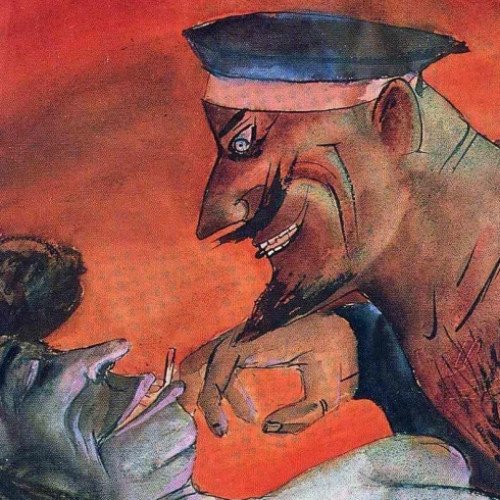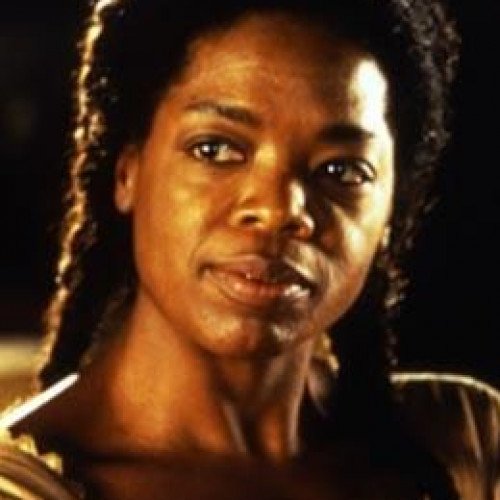"MICKEY SABBATH, SABBATH’S THEATER, PHILIP ROTH" vs "SETHE, BELOVED, TONI MORRISON"

MICKEY SABBATH, SABBATH’S THEATER, PHILIP ROTH
Sabbath's Theatre (1995), a novel by Philip Roth, follows the exploits and pains of Mickey Sabbath, a stereotypical “dirty old man” and out-of-work puppeteer who prides himself on being manipulative and cruel, particularly to women. After many decades of more-than-friendship, Mickey loses his mistress and wingman, Drenka, and finds himself in a crisis, haunted by the ghosts of his past and the spirit of his mother, who encourages him to commit suicide rather than continue living such a shameful and depraved life. Mickey embarks on a quest to find a fitting end to his life, returning to the people and places of his past. The novel opens with the death of Drenka, Mickey's lover of decades, who dies of cancer, leaving Mickey feeling alone and confused. Drenka, the same age as Roseanne, Mickey's wife, was the only woman who truly fulfilled Mickey—ironically, Mickey felt that Roseanne was too old for him, despite the fact that she took better care of herself than Drenka. After Drenka dies, Mickey realizes that he loved her more than he realized during her life; he feels guilty for never fulfilling Drenka's wish to be his only lover. Drenka's death sparks a crisis in Mickey, who leaves his alcoholic wife, Roseanne behind to return to New York in search of his ex-wife, Nikki, who left without a trace three decades before. While Roseanne is in a rehab facility drying out (after her own crisis, sparked in large part by her husband's depravity and infidelity), Mickey goes to New York City to attend a wake and to try to find his ex-wife. The wake is for his old producer, Linc Gelman, who once put on his puppet theatre in New York City. Mickey can't find Nikki, but he does find Norman Cowan, Linc's old partner. Norman invites Mickey to stay with him, despite finding absolutely no trace of the puppeteer he knew three decades before in the washed-up old man in front of him.
Statistics for this Xoptio

SETHE, BELOVED, TONI MORRISON
Sethe, the protagonist of the novel, is a proud and noble woman. She insists on sewing a proper wedding dress for the first night she spends with Halle, and she finds schoolteacher’s lesson on her “animal characteristics” more debilitating than his nephews’ sexual and physical abuse. Although the community’s shunning of Sethe and Baby Suggs for thinking too highly of themselves is unfair, the fact that Sethe prefers to steal food from the restaurant where she works rather than wait on line with the rest of the black community shows that she does consider herself different from the rest of the blacks in her neighborhood. Yet, Sethe is not too proud to accept support from others in every instance. Despite her independence (and her distrust of men), she welcomes Paul D and the companionship he offers. Sethe’s most striking characteristic, however, is her devotion to her children. Unwilling to relinquish her children to the physical, emotional, and spiritual trauma she has endured as a slave, she tries to murder them in an act that is, in her mind, one of motherly love and protection. Her memories of this cruel act and of the brutality she herself suffered as a slave infuse her everyday life and lead her to contend that past trauma can never really be eradicated—it continues, somehow, to exist in the present. She thus spends her life attempting to avoid encounters with her past. Perhaps Sethe’s fear of the past is what leads her to ignore the overwhelming evidence that Beloved is the reincarnation of her murdered daughter. Indeed, even after she acknowledges Beloved’s identity, Sethe shows herself to be still enslaved by the past, because she quickly succumbs to Beloved’s demands and allows herself to be consumed by Beloved. Only when Sethe learns to confront the past head-on, to assert herself in its presence, can she extricate herself from its oppressive power and begin to live freely, peacefully, and responsibly in the present.